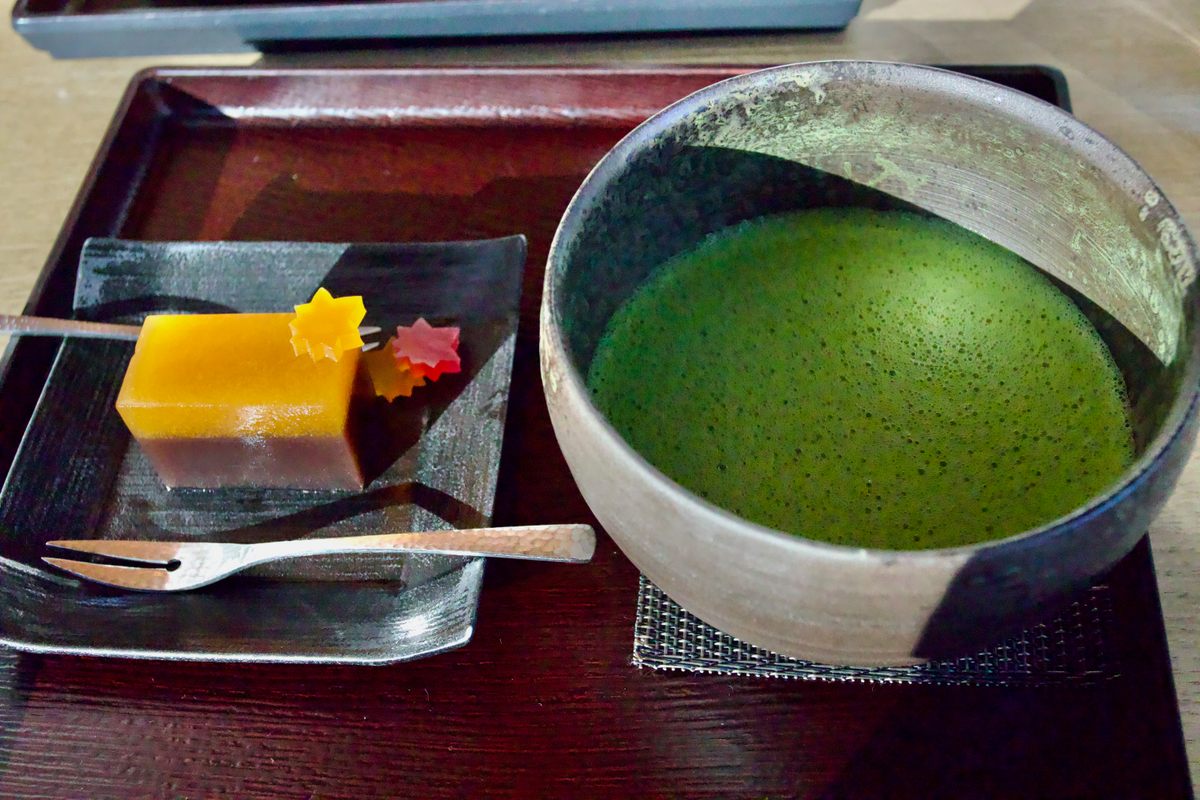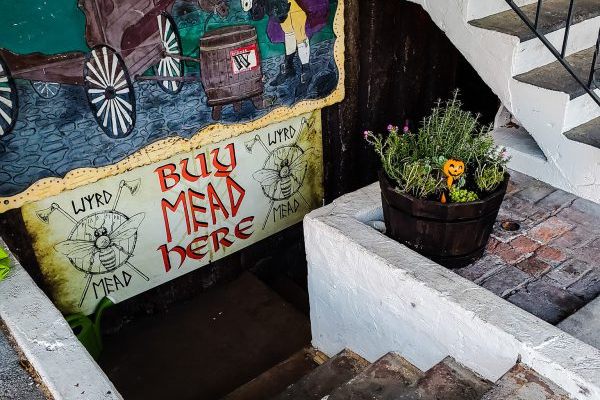The Woman Putting a West-Coast Spin on Japan’s Traditional Tea Sweets
Wagashi is a way to celebrate the beauty of the seasons.
Outside, only a few crimson leaves cling to the gnarled branches of the Japanese maple trees. Inside the Portland Japanese Garden’s modern tea room, glass walls show the forest giving way to winter. The setting may feel like something out of the Japanese countryside, but this oasis is some 5,000 miles away, nestled in a lush hillside in northwestern Oregon.
In the 1960s, the city of Portland converted an old zoo into a 12-acre garden as part of an effort to promote peace and cultural exchange between the U.S. and Japan. The grounds have been called the most beautiful and authentic Japanese gardens outside of Japan by luminaries like Nobuo Matsunaga, the former Japanese ambassador to the United States. The teahouse, the Umami Café, strives to bring the same authentic flair to their fare. While their grassy matcha and roasted-rice teas are always on the menu, their wagashi changes with the turning of the seasons.
Wagashi, which translates to “Japanese sweets,” are bite-sized morsels made of bean paste, mochi, and fruits. They are baked, steamed, jellied, and molded into edible works of art that both embody and celebrate the seasons.

“Wagashi provide us with a moment to appreciate the four seasons,” says Stephanie Erickson, manager at Umami Café. “It’s the season that determines the flavor, texture, and design.” The time of year may dictate the flavors, but it takes a skilled wagashi maker to bring the dish to life. Local wagashi expert Gena Renaud is one of the Pacific Northwest’s few wagashi artisans, crafting each piece from scratch, working with the seasons to provide locally-inspired sweets to the café.
Renaud, who was born in Korea, was instilled with a love for food by her adoptive mother in Japan. After moving to the U.S. at age 12, she studied art and eventually embarked on a career in design. Decades later, she came across wagashi molds—like ice cube trays, patterned with designs such as leaves, turtles, and owls—in a Japanese grocery store, and asked her mother to translate recipes for her. In 2010, she opened Yume Confections.

Wagashi come in many varieties, from buttery, chewy manju to the fruity and dense red-bean yokan. Some can fit on a finger-tip, like Renaud’s tiny fall leaves, which crunch and melt in your mouth. Others can be savored in a few bites. “The idea is that you’re going to eat it in two to three bites,” says Renaud. “It’s not something that you’re going to sit and eat for a long time.”
Traditionally, wagashi were reserved for formal Japanese tea ceremonies. “Tea is an opportunity to slow down,” says Japanese tea ceremony expert Jan Waldmann. In Japan’s Edo Period (1603-1868) wagashi replaced dried fruit as the accompaniment to tea. Wagashi were once only enjoyed before tea, not during or after, says Waldmann. Now, in Japan and beyond, wagashi is often enjoyed by itself, but that doesn’t make it any less important. “I feel it still fills the same purpose,” says Waldmann. “You’re still doing it to slow down and be with people.”

When it comes to wagashi, it’s not just about taste, but the whole experience. “They must appeal to all the five senses, but the first thing is the visual,” says Renaud. Their appearance can range from simple translucent blocks and orbs to elaborate floral displays like flowers or koi ponds. Manju—a buttery puck of dough full of sweet baby lima bean paste—is carefully customized to each season with a hot iron stamp, branding them with the image of fall leaves or wintry pine trees.
As for the ingredients, Renaud forages fruits and flowers that thrive in the Pacific Northwest. Her persimmon yokan—a two-toned cube that cuts like butter under the light pressure of the edge of a fork—is one of Renaud’s fall delicacies, made with fruits from her own backyard and served with a bowl of unsweetened matcha big enough to cup in two hands. It tastes like a bite of a perfectly ripe sweet persimmon, complemented with an earthy base of sweet bean. As winter sets in, Renaud will swap the persimmon for seasonal staples like chestnuts and sweet potatoes.

While her wagashi are inspired by traditional recipes, Renaud adapts her sweets for a western palate. Manju, for example, contains wheat and sometimes dairy, technically making it yogashi, a western-style dessert appealing to those more used to cakes and pastries. Renaud’s traditional wagashi also leans toward more familiar flavors in the West as well. “I always want to bring some kind of fruit or something that has some other flavor than just the bean paste,” she says.
Even names are important when it comes to wagashi. Though some sweets have a soft crunch, that’s not what Renaud refers to when she talks about the “sound” of wagashi. “They don’t just call it manju, but something poetic, and oftentimes that poetic name has a deeper meaning that becomes an abstraction or symbol, like referencing a poem,” she says. “It could just be two words, but old people will go, ‘Oh, it’s referring to the story where the autumn breeze was warm and the moon was full.’ You can read a lot more into it.” Renaud’s Silent Snow, a white winter wagashi with a pure white exterior, is named because of its resemblance to a snowball.

According to Waldmann, Renaud’s unique wagashi are a refreshing local spin on tradition. “It is slightly adapted, but it’s still visually a work of art,” says Waldmann. “She’s got that graphic design mind. She’s not copying only what she sees—which is good to do, copy from the masters—but also she experiments. It’s just wonderful to have someone like that here.”
Gastro Obscura covers the world’s most wondrous food and drink.
Sign up for our email, delivered twice a week.






























Follow us on Twitter to get the latest on the world's hidden wonders.
Like us on Facebook to get the latest on the world's hidden wonders.
Follow us on Twitter Like us on Facebook